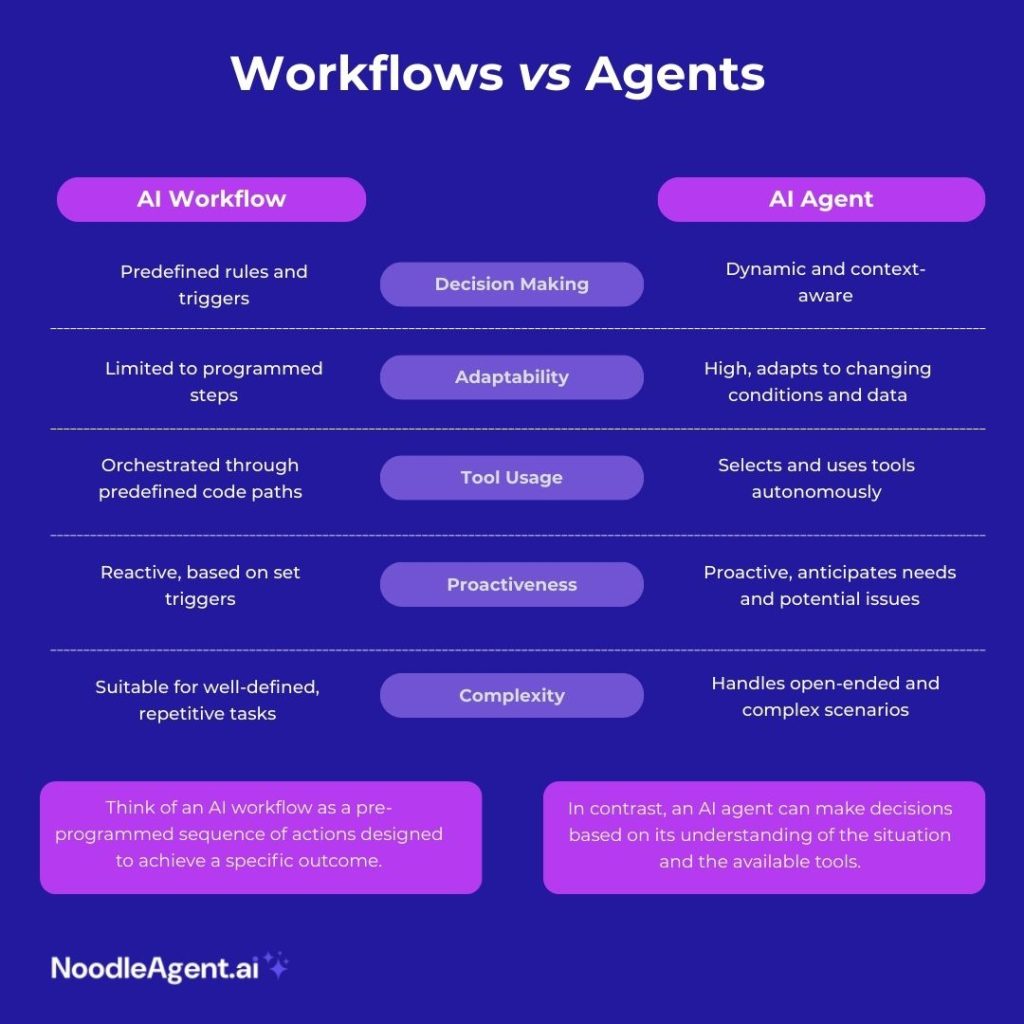Building Effective Automation: Choosing Between Workflows and AI Agents
Artificial intelligence (AI) is rapidly transforming how businesses operate, offering powerful tools to streamline processes and gain a competitive edge. However, the world of AI can seem complex, especially when trying to understand the nuances between different approaches.
At Anthropic, a leading AI research company, a helpful distinction is made between these two concepts. They define workflows as systems where large language models (LLMs) and tools are orchestrated through predefined code paths. Agents, on the other hand, are systems where LLMs dynamically direct their own processes and tool usage, maintaining control over how they accomplish tasks.
To illustrate these concepts, let’s explore how they apply in a practical scenario: merchandising operations. This example will demonstrate the distinctions between traditional workflows and AI-driven agents.
AI Workflows: The Step-by-Step Approach
Think of an AI workflow as a pre-programmed sequence of actions designed to achieve a specific outcome. In the context of your merchandising team managing warehouse stock, a workflow might look something like this:
- Daily Stock Level Monitoring: The system checks the quantity of each product in the warehouse at the end of each day.
- Daily or Weekly Sales Report Generation: A report is automatically generated, detailing the sales figures for each product from the previous period.
- Threshold-Based Reordering: If the stock level of a particular product falls below a predefined threshold (e.g., 50 units), the system automatically generates a purchase order to the designated supplier.
- Fixed Resupply Timing: The system assumes a fixed lead time for each supplier (e.g., 14 days) and schedules the expected delivery date accordingly.
This workflow operates on a set of rules and triggers. It’s predictable and consistent, making it suitable for well-defined and repetitive tasks. For instance, if the stock of a popular item consistently drops below the threshold, the workflow will reliably initiate a reorder.
AI Agents: Intelligent and Autonomous Action
In contrast, an AI agent possesses a higher degree of autonomy and can make decisions based on its understanding of the situation and the available tools. Imagine an AI agent managing your warehouse stock:
- Continuous Stock and Sales Analysis: The agent constantly monitors both the real-time stock levels and the ongoing sales data for all products.
- Dynamic Reorder Point Adjustment: Instead of relying on a fixed threshold, the agent analyzes sales trends. If a product’s sales are unexpectedly high, it might proactively lower the reorder point to ensure sufficient stock. Conversely, for a slow-moving item, it might raise the reorder point to avoid overstocking.
- Intelligent Supplier Interaction: The agent has access to information about supplier order and resupply timings, but it can also factor in real-time data like potential delays or supplier promotions. It might choose to place an order earlier than the threshold if it anticipates a surge in demand or negotiate a better deal with a supplier based on current circumstances.
- Proactive Anomaly Detection: The agent can identify unusual patterns, such as a sudden spike in demand for a specific product across different customer segments. It can then alert the merchandising team to investigate the reason and adjust inventory or marketing strategies accordingly.
The AI agent uses its intelligence to understand the context, access relevant tools (like inventory databases, sales platforms, and supplier communication systems), and make decisions to optimize stock levels and prevent issues like stockouts or excessive inventory.
Key Differences at a Glance
Here’s a table summarising the key differences between how a workflow and an AI agent would approach stock management:

Choosing the Right Approach
For routine and predictable processes like generating daily stock reports, a workflow might be sufficient. However, for more complex and dynamic tasks like optimising reorder points based on fluctuating demand and supplier conditions, an AI agent offers a more intelligent and adaptive solution.
You may be thinking, ‘I should implement agents immediately!’ However, workflows are actually quite effective for solving most business problems. They’re an excellent starting point for automation before advancing to agents for more complex, dynamic challenges.
Begin with the basics, then upgrade when necessary!